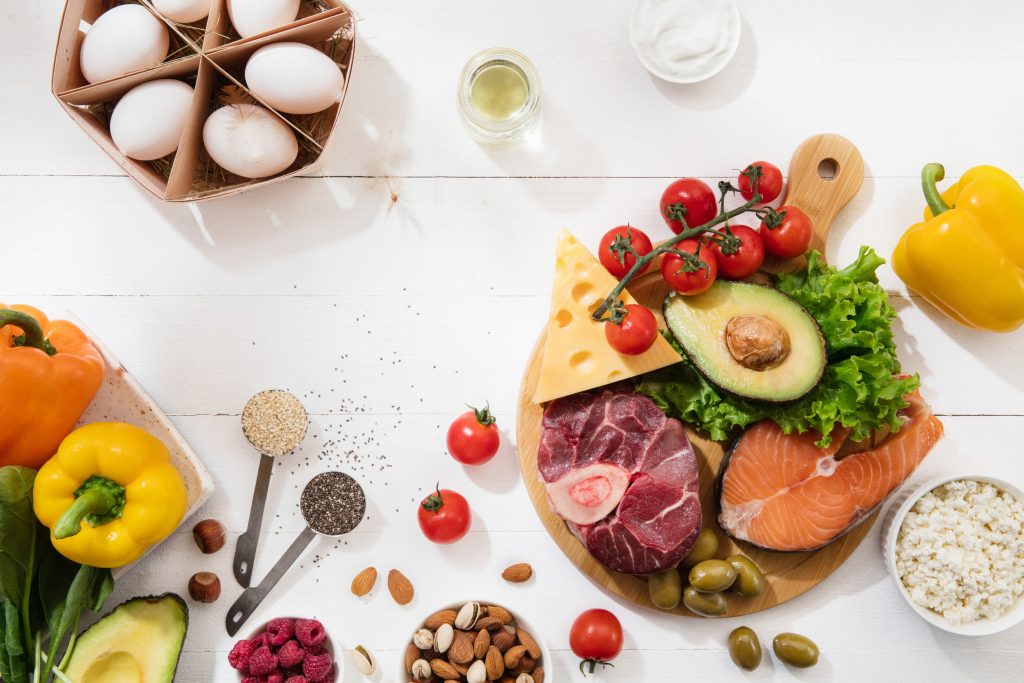
The world of food is constantly evolving. In fact, new trends emerge every year that promise exciting flavors, enhanced nutrition, or futuristic convenience. But as we look at the 2025 culinary landscape, health experts are raising red flags. While we should celebrate creativity in the kitchen, not all trends offer equal benefits; indeed, some may pose unforeseen risks to our well-being. The future of food has arrived, but it comes with a new set of concerns. Here are ten 2025 food trends that worry health professionals.
1. AI-Generated Flavor Compounds
Tech companies are now using artificial intelligence to design novel flavor molecules that have never existed in nature. Specifically, these AI-developed additives aim to create hyper-palatable tastes in processed foods without using traditional sugar, salt, or fat. However, the lack of long-term human studies on these synthetic compounds greatly concerns toxicologists. As a result, we are consuming substances with unknown effects on our gut microbiome and overall health, and this emerging trend lacks sufficient regulatory oversight.
2. Unregulated Personalized Supplements
The concept of nutrition tailored to your DNA sounds revolutionary, and in 2025, it’s more accessible than ever. Companies now offer personalized vitamin packs based on at-home genetic tests. The problem, however, is that this industry remains largely unregulated, with many companies making bold claims without rigorous scientific evidence. Consequently, consumers may take incorrect dosages or unnecessary supplements, potentially leading to nutrient toxicity. For these reasons, medical experts find this to be one of the most concerning 2025 food trends.
3. Lab-Grown Exotic Meats
While lab-grown chicken and beef have been in development for years, 2025 has seen a push toward exotic alternatives like lion and tiger meat. Proponents argue it’s an ethical way to experience rare foods; however, the health implications are a huge question mark. The cellular agriculture process for these meats is complex, and scientists do not well understand the nutritional profile or the potential for unforeseen allergens. Therefore, health experts worry about introducing these novel proteins into our food supply without extensive safety testing.
4. Extreme Fermentation Practices
People know fermented foods like kimchi for their probiotic benefits, but 2025 has brought a trend of “extreme fermentation.” This practice involves fermenting foods for unusually long periods or using wild, uncultured yeasts foraged from nature. While this can create complex flavors, it also dramatically increases the risk of contamination with harmful pathogens. Without precise quality control, a food intended to be gut-healthy can quickly become a source of severe illness.
5. Mushroom-Based “Everything”
Fungi are the new star ingredient, appearing in everything from coffee and chocolate to meat substitutes. While many mushrooms offer health benefits, this trend has led to the use of lesser-known varieties. The risk, therefore, lies in improper identification, as many beneficial mushrooms have toxic look-alikes. Furthermore, companies may not have tested the concentrated extracts used in many products for safety at high doses, making this a potential gamble for consumers.
6. Hyper-Processed Plant-Based Foods
The demand for plant-based alternatives continues to soar, but the focus has shifted to convenience foods that accurately mimic meat and dairy. The downside, however, is that manufacturers ultra-process many of these products, packing them with sodium, refined oils, and chemical additives. For this reason, nutritionists warn that a “plant-based” label does not automatically make a food healthy. These highly engineered products often lack the fiber and micronutrients of whole plant foods.
7. Insect Protein Bars with New Allergens
As a sustainable protein source, insects have gone from novelty to mainstream. You can now find cricket and mealworm powder in everything from protein bars to pasta. Consequently, the health alarm is ringing for allergists, who note that people with shellfish allergies may have severe cross-reactive responses to insect proteins. Since this is a relatively new food category, labeling and consumer awareness have not fully caught up, which poses a hidden danger.
8. “Raw” Water and Unpasteurized Drinks
The “raw water” trend, which involves drinking unfiltered spring water, has made a comeback alongside unpasteurized juices. Proponents claim pasteurization destroys valuable nutrients, but health officials strongly disagree. In fact, consuming unpasteurized products carries a significant risk of infection from dangerous bacteria like Salmonella, Listeria, and Campylobacter. These pathogens can cause severe foodborne illness, especially in vulnerable populations.
9. Ghost Kitchen Meal Kits
Ghost kitchens—delivery-only restaurants—have expanded into the meal kit market. These services offer the convenience of pre-portioned ingredients for home-cooked meals. The primary concern, however, is the lack of transparency and regulatory oversight compared to traditional restaurants. This lack of oversight means that issues like cross-contamination, improper food storage, and unclear ingredient sourcing are more likely to go unchecked, putting consumers at risk.
10. Edible “Mood-Altering” Botanicals
Companies are now infusing a growing number of snacks and beverages with adaptogens and nootropics. These are botanicals that companies claim alter mood, reduce stress, or enhance focus. Manufacturers are adding ingredients like ashwagandha and rhodiola to everyday foods. Moreover, the dosages in these products are often not standardized, and scientists do not know their long-term effects when consumed daily, especially since they can interact with prescription medications.
Navigating the Plate of the Future
As we embrace the future of food, we must maintain a healthy dose of skepticism. Unfortunately, many 2025 food trends prioritize novelty over genuine health benefits and rigorous safety testing. Therefore, it is crucial for consumers to look beyond the hype, read ingredient labels carefully, and prioritize whole foods. Being an informed eater means questioning where your food comes from. We find true wellness in mindful choices, not just the latest fad.
Which of these 2025 food trends are you most skeptical about? Let us know your thoughts in the comments.
Read more:
5 Foods That Make You Seem “Old” at a Social Event
10 Foods No One Should Touch If They Have Any Food Allergies
The post 10 Food Trends That Are Raising Health Alarms in 2025 appeared first on Budget and the Bees.







